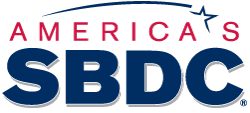By Gerri Detweiler –
 If your business received an Economic Injury Disaster Loan (EIDL) or Paycheck Protection Program (PPP) loan, you may have determined it isn’t a good fit for your small business for any number of reasons:
If your business received an Economic Injury Disaster Loan (EIDL) or Paycheck Protection Program (PPP) loan, you may have determined it isn’t a good fit for your small business for any number of reasons:
• You just wanted the EIDL grant and not an EIDL loan
• You didn’t understand the loan terms when you applied
• You can’t use the EIDL funds or PPP funds the way you hoped
• You don’t think most of your PPP loan will be eligible for forgiveness
• You aren’t sure your business will survive to be able to repay a loan

 Credit scores are often seen as the number one obstacle that prevent small businesses from getting financing. But disorganized financials may be equally to blame.
Credit scores are often seen as the number one obstacle that prevent small businesses from getting financing. But disorganized financials may be equally to blame. Over the nearly 40 years I’ve either owned or otherwise worked in a small business, I’ve observed that even businesses that might not be considered “seasonal” in the traditional sense ebb and flow over the course of the year, creating times when capital becomes tight and the cash flow pinch can cause an otherwise healthy business to struggle. In today’s world, small business budgeting and borrowing are more important than ever. I use these two words together intentionally, because I believe there is a synergy there for business owners who take a strategic approach to capitalizing their businesses.
Over the nearly 40 years I’ve either owned or otherwise worked in a small business, I’ve observed that even businesses that might not be considered “seasonal” in the traditional sense ebb and flow over the course of the year, creating times when capital becomes tight and the cash flow pinch can cause an otherwise healthy business to struggle. In today’s world, small business budgeting and borrowing are more important than ever. I use these two words together intentionally, because I believe there is a synergy there for business owners who take a strategic approach to capitalizing their businesses. To help small businesses and self-employed workers stay afloat due to the COVID-19 outbreak, the IRS created new tax credits, including:
To help small businesses and self-employed workers stay afloat due to the COVID-19 outbreak, the IRS created new tax credits, including: